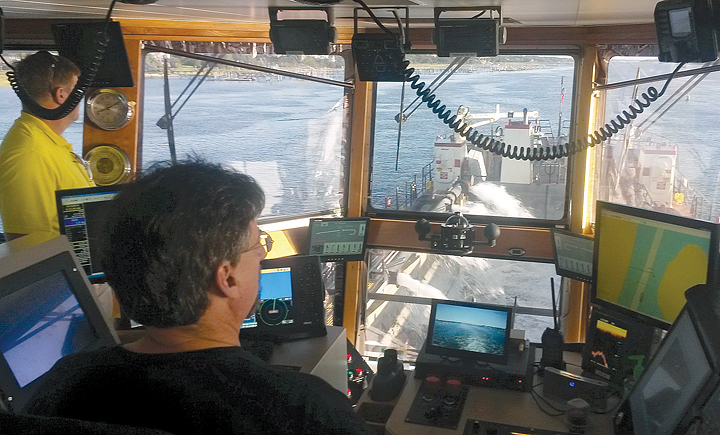North Carolina’s new budget includes more money to keep the state’s shallow inlets navigable. The General Assembly agreed to increase the share of the state gas tax that goes toward dredging inlets less than 16 feet deep, including Carolina Beach Inlet.
“In terms of dredging, we are going to be in extremely good shape in North Carolina,” said Tom Reeder, assistant secretary for the environment with the N.C. Department of Environmental Quality. “Our inlets will be dredged.” (As part of the 2015-17 state budget legislation, the General Assembly officially changed the name of the environmental agency formerly known as the Department of Environment and Natural Resources.)
A full 1 percent of the gas tax proceeds will be dedicated to shallow-draft dredging, compared with one-sixth of a percent previously. In addition to a share of the gas tax, a small percentage of boat license and certification fees goes into the fund, said Darren England, an engineer with the Division of Water Resources.
All together, the fund will grow to about $18 million from the current allocation of a little over $6 million, England said. The current fund includes $2.3 million in gas tax allocations and roughly $4 million from boat fees.
With the new formula in place, the gas tax will contribute about $14.2 million annually, England said.
North Carolina’s gas tax currently sits at 36 cents per gallon, but is expected to fall to 34 cents per gallon by July 2016 based on changes lawmakers made to the tax formula.
The gas-tax contribution isn’t the only thing changing when it comes to dredging projects.
Under the current setup, the state pays 50 percent of the cost of dredging, and counties must pick up the rest. The new formula will have the state pay 75 percent of the cost for coastal counties that are among the state’s most economically depressed and two-thirds of the cost for all other counties.
Hyde County is probably the only county with an inlet dredging project that would qualify in the poorest category, or Tier I, England said. New Hanover is among the state’s most affluent counties and would pay one-third of dredging costs.
Layton Bedsole, New Hanover’s shore protection coordinator, said in an email he didn’t have any figures yet to determine the potential impact on the local budget.
However, England said the bottom line is more money will be available to dredge shallow navigation channels.
Most of the state dredging fund has gone toward main navigation inlets such as Bogue, New River, Lockwoods Folly and Carolina Beach, England said. But the fund also will pay for periodic dredging at other inlets up and down the coast, including Masonboro and New Topsail inlets. The bill also specifically reserves $3 million in the two-year budget for dredging Oregon Inlet.
The money will be used to prevent inlet channels from filling in with silt and sand, which impedes navigation.
email [email protected]




